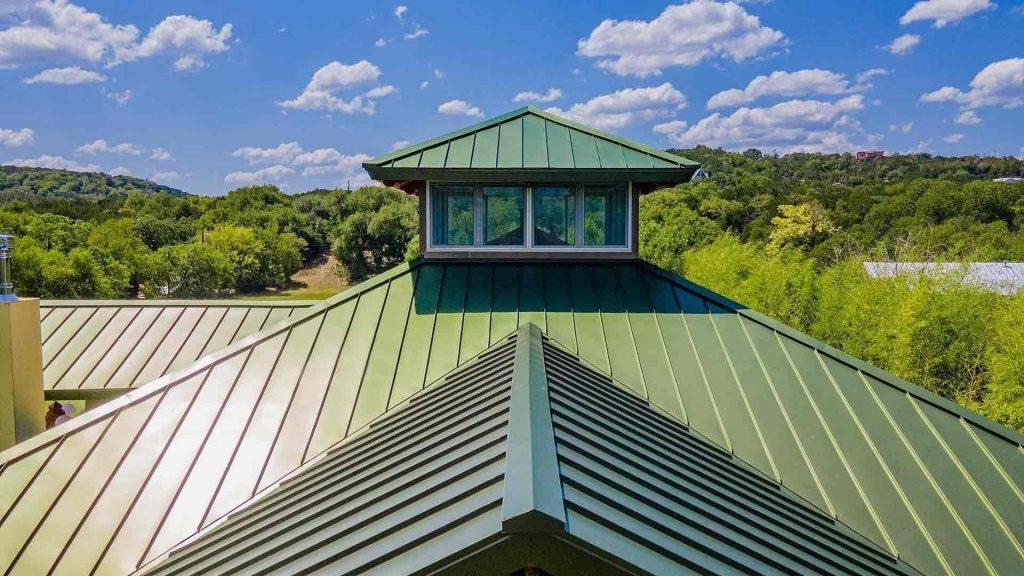Metal roofing has become a popular choice for homeowners and commercial property owners due to its durability, energy efficiency, and aesthetic appeal. However, when selecting metal roofing, one important consideration is the gauge, which refers to the thickness of the metal. Two common gauges used in metal roofing are 24 and 26 gauge. Understanding the difference between these gauges is crucial in making an informed decision for your roofing project. In this article, we will explore the dissimilarities between 24 and 26 gauge metal roofing, including their thickness, applications, and performance.

What is Gauge in Metal Roofing?
Before delving into the differences between 24 and 26 gauge metal roofing, let’s first understand what gauge means in the context of metal roofing. Gauge is a measurement that represents the thickness of the metal sheet. In metal roofing, lower gauge numbers indicate thicker sheets, while higher gauge numbers indicate thinner sheets. Therefore, 24 gauge metal is thicker than 26 gauge metal.
Thickness and Durability Comparison
The primary difference between 24 and 26 gauge metal roofing lies in their thickness and, consequently, their durability. 24 gauge metal roofing is thicker and sturdier, making it more resistant to impact and structural stresses. Due to its greater thickness, 24 gauge metal roofing offers enhanced protection against extreme weather conditions, such as hailstorms and heavy snow loads. On the other hand, 26 gauge metal roofing is slightly thinner and may be more prone to denting or warping under significant pressure. While both gauges offer excellent durability compared to other roofing materials, 24 gauge is considered more robust and long-lasting.
Weight and Handling Considerations
Due to their different thicknesses, 24 gauge is heavier than 26 gauge. This difference in weight can impact the handling and installation process. Installers may find that 24 gauge metal requires additional labor and equipment to handle and lift, whereas 26 gauge metal is more manageable. Homeowners and contractors should take these weight considerations into account when planning their roofing project.
Applications and Suitability Between 24 and 26 Gauge Metal Roofing
The choice between 24 and 26 gauge metal roofing depends on the specific application and the intended use of the roof. Here are some considerations for each gauge:
24 Gauge Metal Roofing:
- Ideal for regions with harsh weather conditions, including high wind areas or areas prone to hailstorms and heavy snowfall.
- Suitable for commercial buildings or structures where durability and long-term performance are crucial.
- Recommended for roofs with longer spans, as the thicker gauge offers better load-bearing capabilities.
- Well-suited for properties in coastal areas, as it provides additional protection against saltwater corrosion.
26 Gauge Metal Roofing:
- Suitable for residential homes and structures with less demanding roofing requirements.
- Recommended for areas with milder weather conditions and less frequent extreme weather events.
- Often chosen for residential roofing due to its slightly lower cost compared to 24 gauge metal.
- Offers excellent durability for residential applications while being easier to handle during installation.
Cost Considerations
Another factor to consider when choosing between 24 and 26 gauge metal roofing is the cost. Generally, 24 gauge is more expensive than 26 gauge due to its thicker and more robust nature. However, the difference in cost may vary based on the specific metal material and the supplier. It’s essential to weigh the long-term benefits of increased durability against the upfront cost when making your decision.
Conclusion:
In conclusion, the difference between 24 and 26 gauge metal roofing lies in their thickness, durability, weight, and suitability for specific applications. 24 gauge metal roofing offers greater thickness and durability, making it ideal for regions with harsh weather conditions or commercial properties with demanding roofing requirements. On the other hand, 26 gauge metal roofing is slightly thinner and lighter, making it more suitable for residential applications or areas with milder weather conditions. Cost considerations and handling requirements should also be taken into account when choosing between the two gauges. By understanding these differences, homeowners and property owners can make an informed decision and select the most appropriate metal roofing for their specific needs and preferences.



Leave a Reply